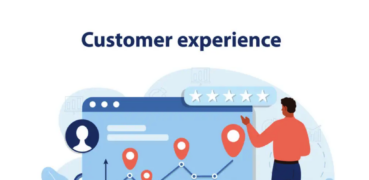The Importance of Post-Purchase Experiences in Building Customer Loyalty

For many businesses, especially small teams and bootstrapped entrepreneurs, the focus often lies in attracting customers and closing sales. However, the real growth opportunity begins after the purchase. Delivering exceptional post-purchase experiences is a powerful way to foster customer loyalty, encourage repeat business, and turn satisfied customers into brand advocates.
In this in-depth guide, we’ll explore why post-purchase experiences matter, how they impact customer loyalty, and practical strategies small teams can implement to strengthen relationships and drive long-term success.
Why Post-Purchase Experience is Critical
1. Builds Trust and Strengthens Relationships
A thoughtful post-purchase experience reassures customers they made the right decision. This builds trust and deepens the relationship beyond a simple transaction.
2. Increases Customer Retention
Acquiring a new customer is 5 to 7 times more expensive than retaining an existing one. Providing value after the purchase encourages customers to return, increasing lifetime value (LTV).
3. Drives Word-of-Mouth and Referrals
Happy customers naturally share their experiences with friends, family, and online communities. Positive post-purchase interactions fuel organic word-of-mouth marketing.
4. Differentiates Your Brand from Competitors
Many brands stop engaging once a sale is made. Prioritizing post-purchase care gives small businesses a competitive advantage by making customers feel valued.
Key Components of a Strong Post-Purchase Experience
1. Clear and Transparent Communication
Customers want reassurance and updates after making a purchase.
Best Practices:
- Send order confirmation emails with clear details.
- Provide real-time shipping updates and delivery tracking.
- Be proactive with delay notifications to manage expectations.
Example:
A small online boutique sends an order confirmation with estimated delivery, followed by SMS updates when the order ships and arrives.
2. Personalized Thank You Messages
A simple, genuine thank you can go a long way in making customers feel appreciated.
Best Practices:
- Send handwritten or personalized thank-you notes.
- Include a small freebie or a discount on the next purchase.
Example:
A handmade jewelry brand includes a handwritten thank-you card with every order, offering a discount on future purchases.
3. Easy and Hassle-Free Returns
A smooth return process reduces friction and builds confidence in your brand.
Best Practices:
- Offer clear return policies and simple instructions.
- Provide prepaid return labels when possible.
- Implement easy online return requests.
Example:
A clothing startup offers free returns and exchanges with an easy-to-use online portal, making customers more comfortable with purchasing.
4. Product Education and Support
Help customers get the most value out of their purchase by offering guidance.
Best Practices:
- Send how-to guides, tutorials, or FAQs.
- Offer proactive customer support through email, chat, or social media.
- Share tips and tricks for product use.
Example:
A fitness brand emails customers a workout guide tailored to the equipment they purchased, encouraging product engagement.
5. Loyalty Programs and Rewards
Rewarding repeat customers encourages them to continue buying from you.
Best Practices:
- Implement a points-based loyalty program.
- Offer exclusive discounts for repeat purchases.
- Provide early access to new products or sales.
Example:
A coffee subscription service offers points for each purchase, which customers can redeem for discounts or free products.
6. Request for Feedback and Reviews
Inviting customers to share feedback shows you value their opinion and builds trust.
Best Practices:
- Send follow-up emails asking for reviews.
- Make it easy to leave feedback on your website or third-party platforms.
- Act on feedback to improve products or services.
Example:
An eco-friendly skincare brand follows up with customers two weeks after purchase, asking for reviews and offering a small discount for their time.
7. Proactive Customer Support
Being responsive and helpful when issues arise is essential for trust.
Best Practices:
- Offer multiple support channels (email, live chat, social media).
- Respond to inquiries quickly and empathetically.
- Proactively check in after delivery to ensure satisfaction.
Example:
A small electronics brand follows up after delivery to check if the customer is satisfied and offers a free setup guide if they need help.
How Post-Purchase Experiences Drive Customer Loyalty
1. Enhances Emotional Connection
Positive post-purchase interactions create an emotional bond with customers. This connection fosters brand loyalty and encourages repeat purchases.
2. Encourages Repeat Purchases
By offering value beyond the transaction, customers are more likely to return. Personalized offers and loyalty programs incentivize them to buy again.
3. Turns Customers into Brand Advocates
Satisfied customers share their experiences online and offline, referring your brand to others. This organic marketing is more authentic and trusted than traditional ads.
4. Reduces Buyer’s Remorse
A great post-purchase experience reassures customers, reducing doubts and second-guessing about their purchase decision.
Best Practices for Small Teams to Enhance Post-Purchase CX
- Automate Where Possible
- Use email automation for order updates and feedback requests.
- Set up SMS alerts for shipping updates.
- Tools: Klaviyo, Mailchimp, Postscript
- Leverage Personalization
- Use customer data to personalize offers, content, and product recommendations.
- Tools: HubSpot, ActiveCampaign
- Simplify Processes
- Make returns, exchanges, and customer support easy to access.
- Tools: Returnly, Zendesk
- Surprise and Delight
- Occasionally surprise customers with unexpected perks or gifts.
- Example: Include a small freebie or a thank-you note in packages.
- Collect and Act on Feedback
- Encourage customers to share feedback and reviews.
- Use insights to improve products and processes.
Real-World Examples of Great Post-Purchase CX
1. Glossier
Glossier includes personalized thank-you notes and surprise stickers with purchases, creating a memorable unboxing experience that encourages social sharing.
2. Chewy
Chewy’s customer service is legendary. They send handwritten holiday cards and even flowers to customers who have lost a pet, creating deep emotional connections.
3. Allbirds
Allbirds makes returns hassle-free by offering prepaid shipping labels and providing clear return instructions, which reduces friction and builds trust.
Conclusion
For small teams and bootstrapped entrepreneurs, the post-purchase experience is a golden opportunity to turn one-time buyers into lifelong customers. By focusing on personalized communication, proactive support, and loyalty rewards, you can strengthen relationships, encourage repeat business, and inspire advocacy.
Remember: The sale isn’t the finish line—it’s the starting point of a long-term relationship.
Ready to build customer loyalty? Start enhancing your post-purchase experience today and watch your business grow.
Tags: Customer Experience, Post-Purchase Strategy, Customer Loyalty, Small Business Growth, Customer Retention







